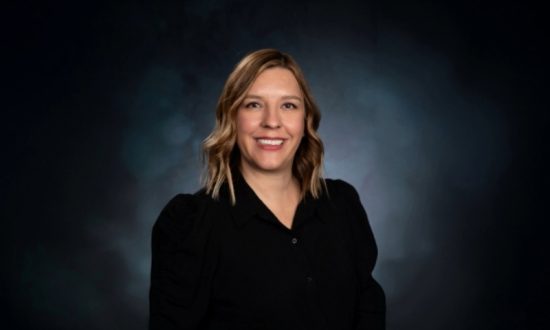Janelle Elias is a higher education strategist and innovator with over 25 years of experience in roles such as chief academic officer, chief strategy officer, dean of institutional effectiveness, and director of accreditation and assessment. With a foundation in IT, she ran her own web design and development company and became the first female assistant dean for information systems and technology at a large national university. Elias holds a B.A. in English Literature from Georgia Southern University and an M.A. in Adult Education and Distance Learning from the University of Phoenix. She teaches online courses in business, IT, and entrepreneurship and is a frequent speaker and author on these topics. Her work has received multiple awards for innovation, including recognition as one of the “Top 50 Women Leaders in Phoenix” (2024) and “Business Woman of the Year” by the Tempe Chamber of Commerce (2022).
In a recent interview with Higher Education Digest, Janelle Elias discussed her experience in Academic Affairs and leadership. She shared her views on innovation with institutional traditions, academic leadership, AI and digital learning platforms, and many more.
What inspired you to pursue a career in academia, and how did your journey lead you to the role of Chief Academic Officer?
From a young age, I felt called to become a teacher. Over the years, I explored various instructional roles such as tutoring, teaching pre-K, community college instructor, and an online university adjunct. Through these experiences, I discovered a passion for teaching adult learners, which I continue to do today through online courses and professional workshops. I believe that staying engaged in teaching makes me a more effective administrator.
As a first-generation college graduate, I’ve experienced first-hand how education can transform lives and families. My non-traditional academic journey pursuing my educational goals while working full-time and raising a family has shaped my resilience, adaptability, and commitment to lifelong learning. I benefited from direct workplace experience and mentorship while also applying my newfound knowledge from the classroom. I completed a Master’s degree in adult education and distance learning and was an early adopter of online education, working my way up the career ladder at institutions that pioneered distance and online education models.
Throughout my career, I’ve had the privilege of learning from inspiring Chief Academic Officers (CAOs) whose leadership blended vision, heart, and strategy. They helped me realize that this role aligns perfectly with my strengths and values. As a CAO, I can champion teaching and learning, support educators and students, and lead initiatives that create meaningful, lasting impact within communities.
What are the key responsibilities of a Chief Academic Officers, and how do they balance innovation with institutional traditions?
A CAO is generally second-in-command to an institution’s President, with primary responsibility for ensuring academic excellence across all programs. This includes overseeing accreditation compliance, maintaining rigorous academic standards, and ensuring that students are taught by highly-qualified, effective instructors. A key part of this role is to ensure that academic offerings yield strong student outcomes, which should be monitored through data-driven assessment of student learning and continuous program evaluation.
Many CAOs, like me, lead academic and institutional strategic planning processes, which can be leveraged to promote continuous improvement and college-wide innovation. In my experience, an effective CAO has to build a healthy culture of partnership across the divisions of the college and shared governance with the faculty, and balance a vision for the institution with the readiness and capacity of the faculty. To navigate this balance, the CAO should stay well-informed on higher education trends, technology trends, and disruptive innovations both to spot the potential impact to the institution, but also to proactively provide faculty with the resources and support they need to experiment, adapt, and lead.
Higher education is evolving rapidly—what do you see as the biggest challenges and opportunities in academic leadership today?
Changes to higher education policy, practices, funding, and structures at the federal and state level are always a challenge because you have to implement changes within your institutional operations to align with externally-driven regulations. When a new governor or president is elected, an institution has to be agile enough to respond to externally-driven changes.
Another disruption to higher education right now is the rapid pace of technological changes. The widespread access to generative AI begs deep questions about the process of teaching and learning, especially in topics like critical thinking and written communication. Additionally, a shifting public perception of higher education is driving shorter-term alternative learning experiences that more clearly align college to jobs. These challenges present opportunities for academics to reimagine how to achieve their core mission while also increasing responsiveness, innovative approaches to instruction, and practical connections to life outside the classroom.
How is technology, particularly AI and digital learning platforms, transforming curriculum development and student engagement?
AI and digital learning platforms empower a learner to access what they want to know, when, and in what format. Informal learning has become so accessible that the learner essentially becomes a consumer of education as a product and service. Many higher education institutions do not have this kind of flexibility or scalability in their offerings, which are more dependent on the faculty member’s expertise and availability. Innovative online programs are emerging that scale digital education and un-bundle the traditional role of the faculty. AI is also being used in instructional design and assessment processes. For example, students can now engage in instructional support services 24/7, such as chat bots, gamified discussion boards, formative assessments, and tutoring. It is critical to keep students at the center and ensure faculty are guiding these decisions of what instructional components can and should be automated with high quality and integrity. While AI can create operational efficiencies in business processes, education should remain an experience of human connections.
What strategies do you believe are most effective in ensuring student success, retention, and career readiness?
A strong foundation for student success and retention begins with a shared institutional definition of what student success truly means. This includes identifying a small number of focused key performance indicators to serve as clear, measurable goals. Once these metrics are established, it’s essential to engage all stakeholder groups across the institution, helping them connect their existing work to these shared goals.
Empowering department-level leaders to drive progress toward these goals is a powerful way to build a culture of student success. Equally important is recognizing and scaling strategies that are working, celebrating successes and investing in what moves the needle. Institutions should lean into their existing strengths while continuously identifying areas for improvement.
It’s critical that students and alumni are informing this work. I prioritize their voices through student surveys, alumni surveys, and ongoing focus groups, which not only shape our strategies but also help us evaluate their effectiveness. We also use historical data to better understand which student populations have thrived and which have faced barriers to completion. We partner closely with our Institutional Research and Effectiveness team to build data intelligence that enhances our ability to proactively support students and assess whether our student support services are truly aligned with their needs.
With the increasing focus on diversity, equity, and inclusion in education, how do you approach implementing meaningful change in academic programs?
At my institution, we focus on identifying and meeting each student’s individual learning intention. This intention could be taking one class for new skills, completing a short-term microcredential, or completing a two-year degree to transfer to university. We collect this data to promote personalized learning experiences, build stronger relationships between students and faculty, and reinforce a student’s motivation to persist to the educational goal. We actively work to remove and reduce barriers to education like incarcerated education, dual enrollment, tuition assistance, flexible scheduling, Open Educational Resources, emergency funding, and peer-to-peer learning communities. I aspire to drive meaningful change by making education accessible to all.
How do you see the future of faculty development and academic leadership evolving in the next decade?
Ten years from now, faculty development and academic leadership will be defined by agility, intentionality, and a strong orientation toward change leadership. The role of the CAO will require not just stewardship of academic integrity but also the ability to lead through disruption, helping faculty navigate rapid technological advances, evolving student expectations, and shifting models of credentialing and learning delivery.
Sustained investment in faculty development will be essential. This calls for building a culture where continuous learning is expected, supported, and rewarded. As someone who has led in areas like online learning and micro-credentialing, I’ve seen first-hand how academic leaders must adopt entrepreneurial mindsets. These leaders can act as translators and guides, helping faculty see opportunities rather than existential threats in the face of change.
Looking ahead, AI will undoubtedly shape curriculum, pedagogy, and academic workflows. But amidst all this, I believe that practices like action research will remain vital. It grounds faculty development in reflective, data-informed inquiry, while simultaneously driving institutional improvement. Action research not only builds faculty capacity but also reinforces shared responsibility for innovation and student success.
Ultimately, academic leadership in the next decade will be less about preserving a static model and more about equipping faculty to thrive in a dynamic, values-driven ecosystem. The leaders who succeed will be those who can cultivate trust, foster experimentation, and align institutional mission with the possibilities of the future.
What advice would you give to aspiring academic leaders who want to make a lasting impact in education?
My advice to aspiring academic leaders is to become voracious learners. Develop expertise in a specific area of teaching and learning that you’re passionate about and can lead with authority. Seek out a mentor in that space, and immerse yourself in a community of practice that shares your interests. Engage in research that explores real challenges or innovations in your context, and then apply what you learn in your everyday work. Share your results publicly to create a ripple effect that inspires other innovations and ideas and makes a lasting impact.
What motivates you to continue driving innovation and excellence in academic leadership?
I’m driven by a personal mission to expand access to higher education and to promote the skills and mindsets that empower adults to shape their own futures and careers. At the heart of this is my deep belief in human creative potential – the idea that, given the right tools and opportunities, people can transform not only their own lives but also the communities around them.




